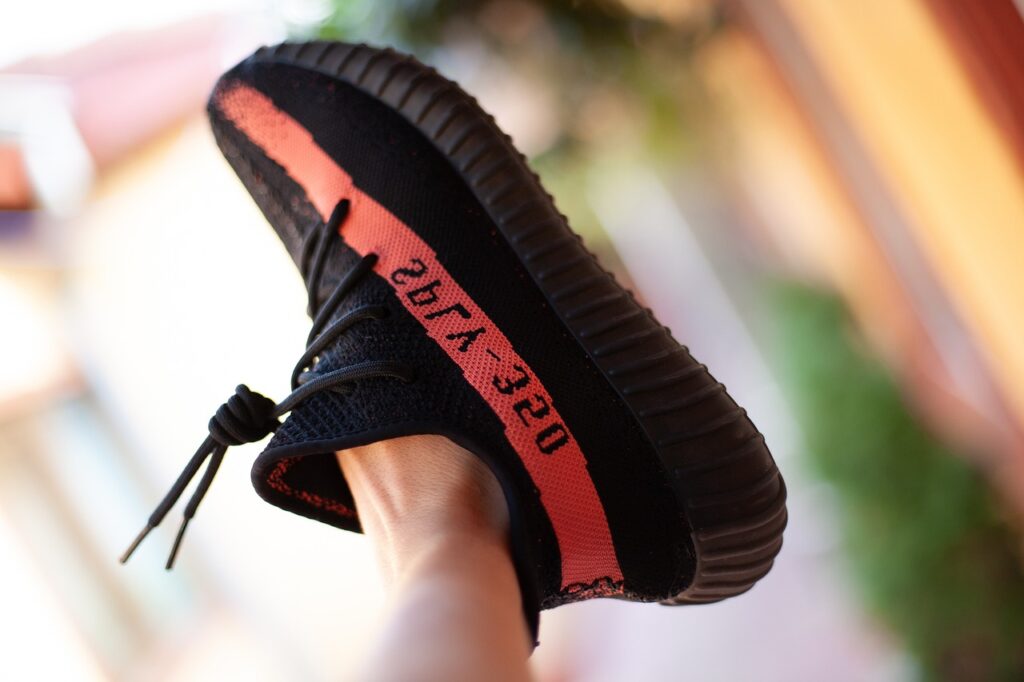Kanye West is many things. But is he visionary when it comes to fashion? I don’t know. For fear of pissing people off, I’ve been tight-lipped on this, but I don’t think he is at all. Just because someone wears something outrageous does not mean they have an exquisite taste.

Kanye’s looks, especially the more recent ones, have fallen a bit flat in my eyes. The dark-on-dark monochrome look is usually really appealing and continues to be, and Kanye is clearly a fan of it. But as of late, most of what he’s been seen wearing has been casual, simple, and a bit plain. And that’s fine. Kanye West hasn’t been in the public eye a ton lately. And to be fair, the majority of outfits I find well designed tend to be on the more muted side. But certain clothing and footwear released under the Yeezy label have given me cause to pause.
Separating Product from Profit
For instance, let’s take the Yeezy slides. I like the silhouette of the sandal. It’s chunky but minimalistic, and offers comfortability. But I want to point out that it’s literally a slab of low quality rubber with a hole punched out for the foot to slide into with simple herringbone traction. I honestly do like the look of the shoe, and it’s $70 retail price was fair (still kind of high in my opinion, but fair). But as is the case with the majority of streetwear products, many of the sales activity will be done on the resale market. And here lies my issue with products like this. The slides are valued between $100 to $250 depending on the color way you are looking for on the resale market. But because price is movement is indicative of changes in demand, it’s clear that people are willing to pay a high price for these pieces of footwear. And that begs the question: are people paying for value, or is the marketing department for the Yeezy brand winning this exchange?

I think the answer to this question is a little bit of both. Or maybe it’s neither. Let me explain. How much does the slide really cost to make? Probably not much. Honestly, if I had to guess, I’d guess less than $10 dollars, maybe even around half of that. Of course, packaging, distribution, and transportation costs will add expenses on Nike’s end, but at the end of the day, the $70 retail price tag is already an enormous markup from the cost of production, distribution, and transportation. On the other hand, a similar slide from a store like WalMart cost probably marginally less to make, but the company producing the product likely listed it at a far lower price than the Nike producers did. Both products were made at similar prices, but the market value is drastically different for each. The reason for this is the all important psychological manipulation that is marketing. The Nike symbol on its own will justify a moderate price markup for most people. Adding the Yeezy label to it and releasing it under the approval of Kanye West adds a whole new dimension to the marketing strategy of Nike when it comes to footwear. People want to be associated with the fashion icon “alleged fashion icon, I should say”. Taking it a step further, once people see others wearing it out and about (especially young people) implicit conformity kicks in, and for many, begins to dominate their psyche. The mental state I described is, in part, a goal of Nike’s (and by extension West’s) marketing strategy to keep demand for the product high. And once it sells out (because only a small number of products are made-another genius marketing move by the corporation) the scarcity mindset adds another layer to the prospective consumer’s psychological qualm, and he begins to think “I’m willing to pay someone else more than the $70 retail price for these pieces of rubber”. That’s where the resale market and websites like StockX come in. We see resale prices as reflections of the market value, not the intrinsic value of these pieces.
Does Implicit Value Justify Prices?
Is this a case of people being blind to marketing tactics, or are they getting actual value in their purchase. It depends on the person I guess. In terms of physical value, the amount of quality one gets from the Yeezy slide is about the same as that of another cheap, similar-looking slide. But then comes the idea of social currency. Does owning a poair of Yeezy products give one an in to a certain social group? Will those without those shoes be shunned by their existing social group? Will buying similar alternatives become stigmatized too? The answer to all of these questions depends on the person, but many times, would be a yes. The intrinsic physical value of these products differs from the social symbol they embody, and for that reason, people implicitly justify themselves paying up to 15 times the production cost of the product on the resale market. To some, that may be a fair justification. To me, maybe not. To each their own, perhaps. Keep in mind, though, that a lot of these mental processes don’t happen with you realizing it, and they might only be realized when someone points it out. That’s what I’m trying to do.
Do I think Kanye has taste in fashion, sure. Do I think his taste is anything special, definitely not. What I do think is that the Nike marketing team so masterfully orchestrated a system in which the Yeezy slide has been built up as a social symbol that has become commodified. I am not enough of a fan of them to purchase them on the resale market, or probably even the retail market, but I do think the shoes are innovative and modern. I’d advise people to think twice, maybe even three times before they buy anything, however. Ask yourself: If there were to be no label on it, would you still buy it?
